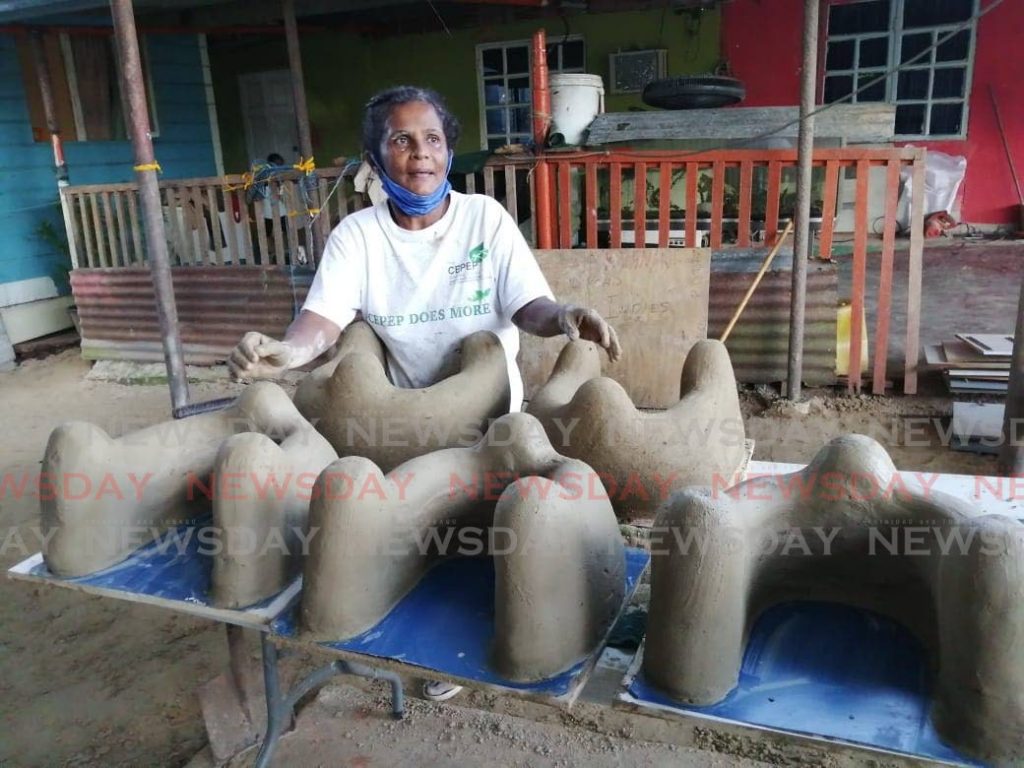Shanty, the fireside queen of Siparia

Like curry, Shanty Ramsamooj is spicy and full of life.
Next week, she celebrates her 55th birthday with a thanksgiving at her modest home located opposite the Siparia West Secondary School.
She reinvented herself two months, as her main source of income collapsed with the closure of schools owing to the covid19 pandemic.
Ramsamooj ran a parlour opposite the school and her phulorie was a hot seller among the students.
Instead of buckling under pressure, her instincts kicked in to find a way to help provide food for her extended family of 18.
Hard work and long hours are no deterrent to Ramsamooj who became a social media sensation as her daughter, Nandi Shyam, posted live videos of her cooking and making the traditional Indian chulha.
Her day starts early and and ends very late and everyone in the family is involved in getting the job done, from gathering crocus bags of clay from Fyzabad, dried lumber, making the street frames, finding the right grass, mixing the clay with cement and sharp sand and kneading the mixture until it is perfect for the mould.

"I find when you cook on a fireside the food does taste sweeter than if it cooked on a stove," Ramsamooj told Sunday Newsday during an interview at her La Brea Trace, Siparia home on August 30.
Chulha, the Hindi word for fireside, is made of clay, grass and smothered in cow dung and was introduced to the Caribbean by the indentured labourers in the late 1800s.
They are still used in some states in India, like Bihar, today and are cherished in local homes across the country where sumptuous meals of curry duck, hard fowl and roast tomatoes and baigan are made.
According to Indian Caribbean Museum of TT, the first chulhas were made from at least three pieces of rocks placed in a triangular position and raised to about eight or ten inches above ground. The pots were placed on the top of the chulha while dried wood was used as fuel to ignite the fire.
Clay chulhas were often constructed in a very simple way to accommodate one pot at a time, or in a more complex form, often referred to as do-aillah, to accommodate two pots.
Ramsamooj has become a master at her craft churning out close to two dozen firesides a day to meet the demand from her customers stretching from Tobago, Toco, Chaguanas, Palo Seco, Santa Flora, Fyzabad and San Juan.

She boasted that her chulhas were strong and "cannot mash up" since he has reinforced the structure with a metal frame, covered in layers of sapate mud, a special grass and moulded by hand.
The finished product is glazed with a diluted mixture of fresh cow dung and left to dry. They can be "leepayed" with the cow dung mixture periodically after use to preserve the structure which develops small cracks from the constant heat.
At her home she had on display, single pot firesides, double firesides on a stand, a small and a large earthen oven. She said she could also make the do-alliah, which could cook two meals with one fire.
Ramsamooj advised chulha owners to use wood that do not emit plenty smoke, such as padoux, orange, portugal, which were best to use to slow cook meals. She warned that woods such as pitch pine and cedar could "spoil a pot."
Ramsamooj, who uses her fireside often, advised that new owners should not pack wood too tightly and should leave room for the fire to breathe. She had "a pookney," a piece of PVC which she use to blow oxygen to ignite the flames when needed, a short broom made from the ends of weeds to sweep away the coals after use and a grill to roast vegetables over the heat.
Most foods can be cooked on a fireside, including roti, where the cook can use a chimta, a long thin metal tong to flip the roti on a tawah and hold the roti over the open flames to swell.
Some international food experts claim that earthen pots work wonders when it comes to naturally enhancing the flavours of the dish when cooked on a fireside. They claim the food cooked in earthen pots on mud chulha is rich in nutrients as it helps retain the moisture and the aroma of the cooked food, according to online blog Gastroutes, an eclectic gastronomy journey through India.


Comments
"Shanty, the fireside queen of Siparia"